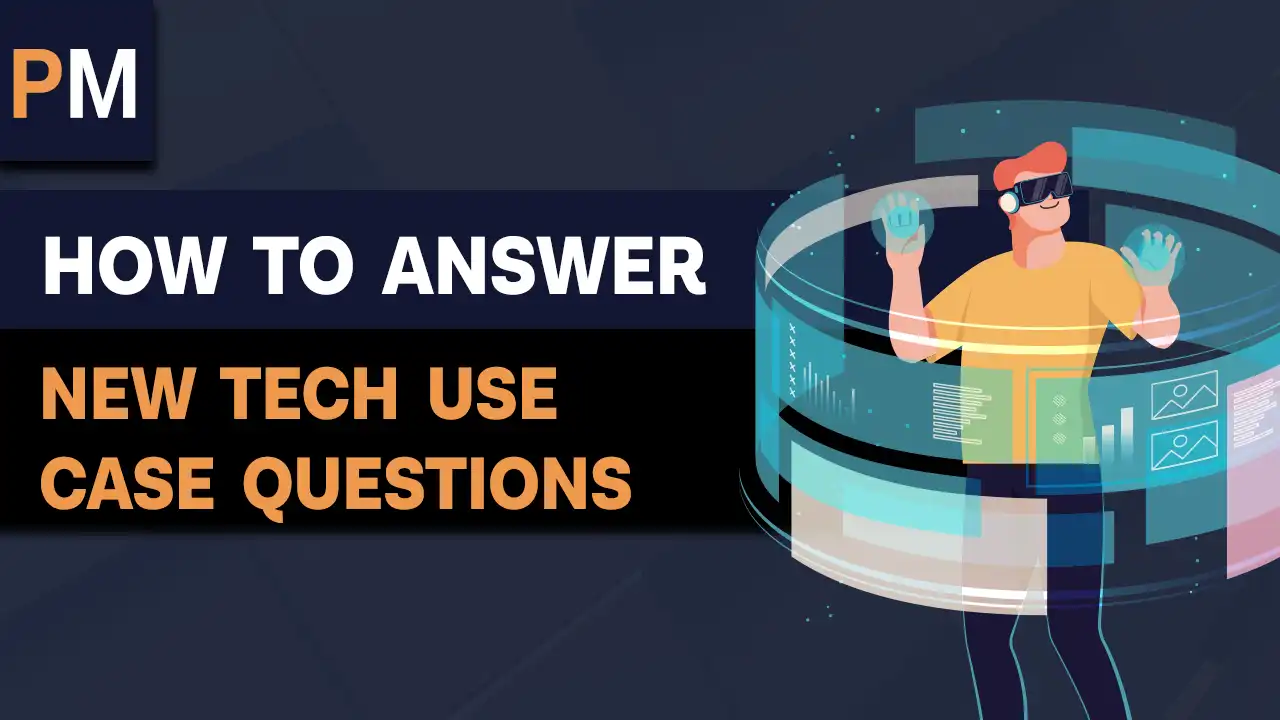
How to Answer New Tech Use Case Questions
This is one of Google’s favorite type of Product Sense question. They want to get a good sense of your ability to think of novel use cases for new technology that they have built or are planning to build.
Here is how you answer a New Technology Use Cases interview question:
Step 1) Ask Clarification Questions.
Your first task is to get a clear understanding of how the technology works and what it does. Your clarification questions will really depend on the technology that is being asked about.
For example, imagine that the interviewer asked you to “imagine that there is a new tiny video recorder that is very cheap to produce and can record and upload video. What would you do with this technology?”. Your first job here is to understand the limitations of the technology and what it does. For example, ask:
- - How small is this device?
- - How long can it record without needing to be recharged?
- - How heavy is it?
- - How close to a router or an internet tower does it need to be?
- - Can it work in different conditions e.g. during movement, cold weather, etc?
- - What is the price per unit?
- - How high is the video resolution?
The answers to your questions will help you get a really good understanding of the technology and help you get ready for the next step.
Step 2) Describe the significance of the unique attributes of the new technology.
This is where you briefly talk about the new behaviors or user actions that can be created or enhanced using this new technology. For example, let’s assume that the interviewer told you that the cost of the device is 10 cents per unit. It can record and upload up to 24 hours of video as long as it is within a 1 km distance from the router. It can handle movement and still record videos well. Its the size of a penny, weighs 10 grams, and it can record 240K videos.
These are all valuable pieces of information that tell you how you can use this device to get a better understanding of the surroundings of an object at a fairly low cost as long as you don’t need a high resolution video. It will be interesting to think about what objects and environments can benefit from this. Ideally, the cameras will be attached to objects that are not spread out too far in a large geographical area since they need to be within 1 km of a source of internet (e.g. router, phone).
We can also create additional use cases if the video recordings don’t happen consistently and instead, happen on a sample basis (e.g. 1 minute per hour).
Step 3) Brainstorm some ideas
This is the step where you have to think about the type of use cases that can be enabled by this new technology. At this time, it is okay to ask the interviewer for a minute to think about the potential use cases where the problems you’ve identified above in step 2 exist so you can solve them. Here, you want to do two things:
One - Find a use case that has a problem that the technology solves. Two - Imagine whether the existing product will get much better in some way once you incorporate the new technology into it.
For our new technology example, here are a few ideas that come to mind:
Sports - Perhaps this can be a tool that enables the players in a game to send their 360 view of the game to a central server. The information can then be used for either better entertainment of the audience or for performance analysis by the coach and the team as the videos will show the players view. It can also be used for fun by people who do sports (e.g. connect the light camera to your hat when playing tennis and record the game).
Safety - This new technology can be a great tool to ensure safety of someone who’s walking in an unsecure neighborhood that they are not comfortable with. How about a device that you can attach to your forehead or hat and record a video of your surroundings to your phone and upload onto the cloud as you walk in the neighborhood?
Remote Security Cameras - The cost of video recorders is high. Perhaps the new technology can be used in areas that should be secure but are currently not monitored due to the cost of traditional cameras. Examples are video cameras for each floor.
Step 4) Select one use case
After you list out some use cases, ask the interviewer if they would like to see you design one of the products. If they ask you to design the product, select one of the use cases you’ve come up with and follow the standard Product Design interview guide to answer the question.
Note that for selecting one of the product ideas that you have come up with, you don’t need to do a detailed evaluation and analysis of your options. Choose the one that you believe to be most intriguing (or easiest to design) and get started. But make sure that you provide an explanation on why you chose that product.